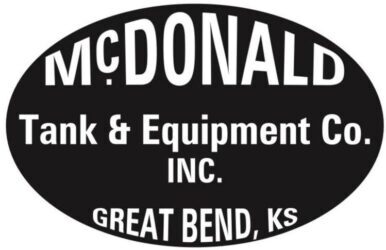The use of fiberglass tanks in commercial fire protection systems has gained popularity due to their versatility, reliability, and suitability for both above and below-ground installations. As concerns about water shortages in the United States grow, municipalities and facility owners are seeking effective ways to manage their water resources, particularly for fire suppression systems that require storing large amounts of water. Fire protection engineers are increasingly turning to fiberglass tanks due to their proven track record in storing hazardous and flammable liquids.
Fiberglass tanks have a history of use in the petroleum industry, where they safely store motor fuels and other petroleum products at retail, government, and commercial fueling facilities. Since the petroleum industry is highly regulated, tanks meeting stringent third-party listing standards with established reliability records are preferred. This history of use with hazardous substances gives designers of fire protection systems confidence in selecting fiberglass water tanks, as they have a track record of performance over several decades.
The material properties of fiberglass make it an attractive choice for water storage tanks, whether above ground or underground. Fiberglass offers a combination of benefits, including strong structural design, lightweight construction, ease of installation, corrosion resistance, and competitive pricing compared to alternative options. Fiber reinforced thermoset resin composites (fiberglass or FRP) have been used in corrosive environments for decades, making them suitable for applications beyond just storage tanks, such as piping and handling equipment.
Fiberglass tanks are designed to withstand H-20 loading conditions, making them suitable for installation in high-traffic areas like parking lots. Their long history of watertight integrity, lightweight nature reducing installation costs, factory-manufactured quality control for large capacity tanks (up to 60,000 gallons), and potential dual-purpose designs (e.g., fire protection standby and potable water) further enhance their attractiveness for fire protection systems.
Comparing fiberglass tanks with other materials commonly used in tank construction:
- Concrete: While concrete has been used for decades, it comes with limitations. Concrete tanks are often field-constructed, making installation time-consuming and expensive. Concrete’s weight increases shipping and handling challenges, and the design of buried concrete tanks might not withstand traffic loads without costly upgrades. Concrete can also be susceptible to corrosion and cracking, raising concerns about watertightness in fire protection systems.
- Steel: Steel tanks are vulnerable to rust and corrosion, unlike fiberglass which is highly corrosion-resistant. Steel tanks often require additional internal and external linings or coatings to combat corrosion, leading to increased costs and maintenance. Additionally, steel tanks are significantly heavier than fiberglass, making transportation and installation more complex and expensive.
- Polyethylene: While polyethylene offers corrosion resistance, it has limitations in terms of installation conditions, groundwater tables, burial depths, and traffic loads. Structural design considerations also often limit the capacity of polyethylene tanks, requiring the connection of multiple smaller tanks to achieve desired storage, resulting in added costs and complexity.
The use of fiberglass tanks in various fire protection projects showcases their benefits:
- A housing development needed a standalone water supply for both potable water and fire protection. Underground fiberglass tanks were chosen due to concerns about freezing water and the difficulty of accessing the installation site with heavy steel tanks. The lightweight nature of fiberglass tanks made installation easier.
- A big-box home improvement retailer faced insufficient municipal water supply for fire suppression, requiring 240,000 gallons of alternative water storage. Fiberglass tanks were chosen over polyethylene due to their larger capacity, economical advantage, and ability to handle traffic loads when buried under the retailer’s parking lot.
Increasingly stringent fire codes and insurance requirements are driving the need for reliable, corrosion-resistant, and structurally strong water storage vessels in fire protection systems. Selecting an inferior tank could jeopardize firefighting efforts during emergencies, making fiberglass tanks an attractive and dependable choice for such critical applications.
